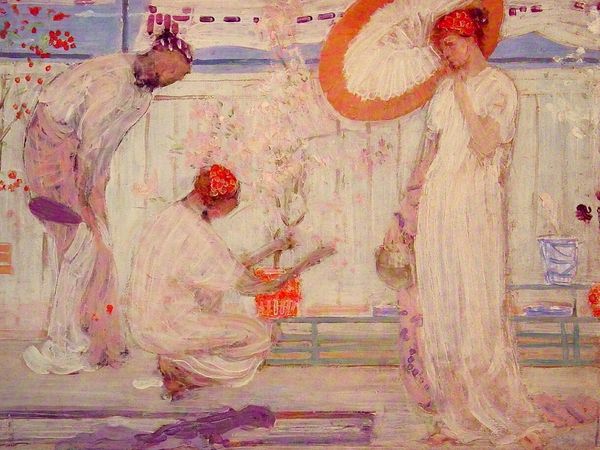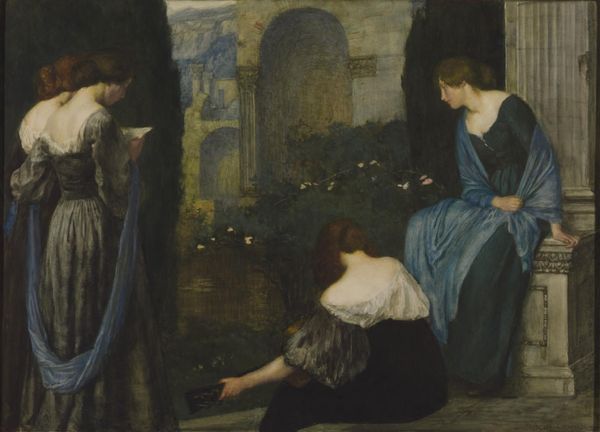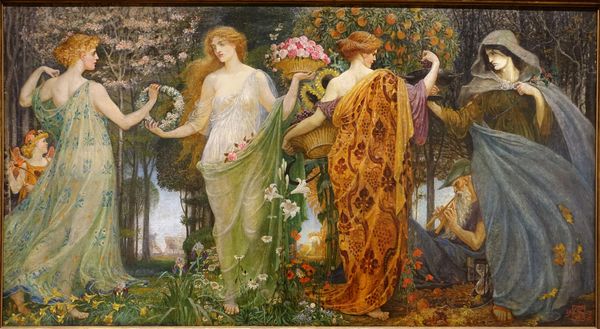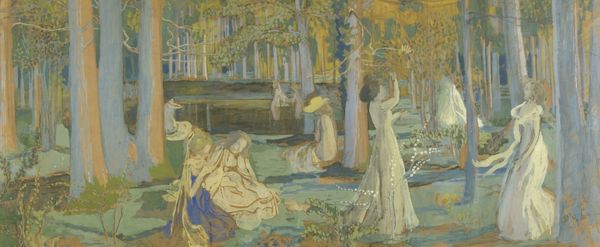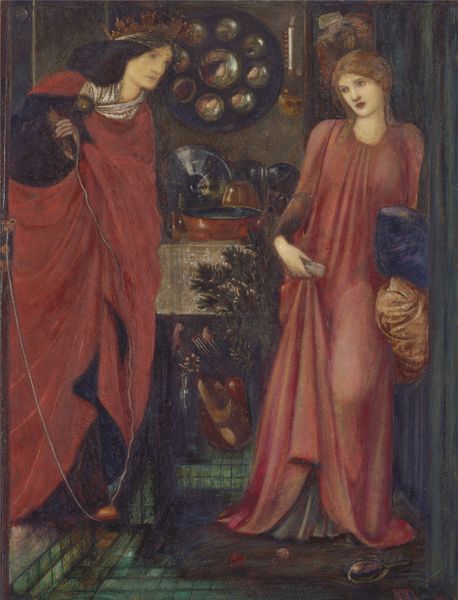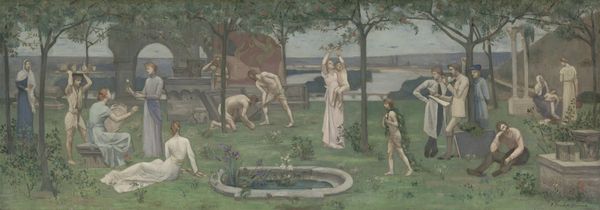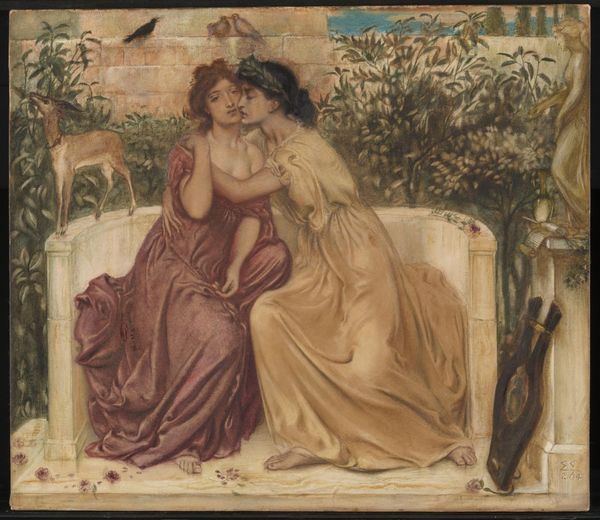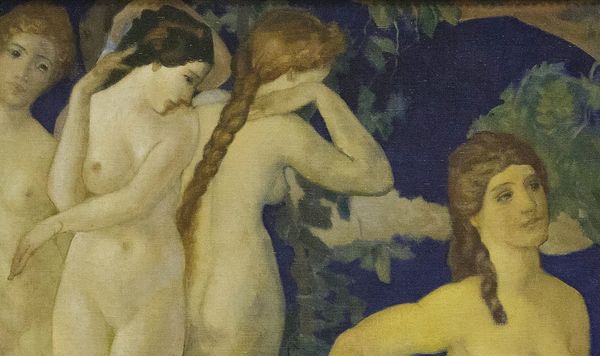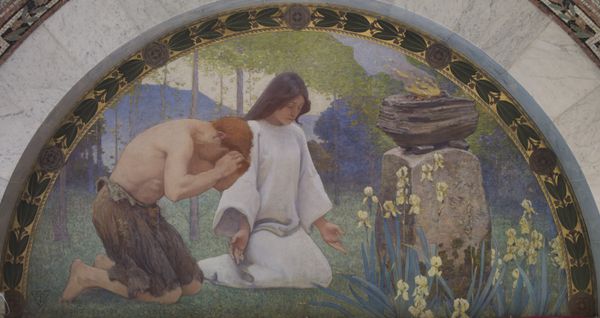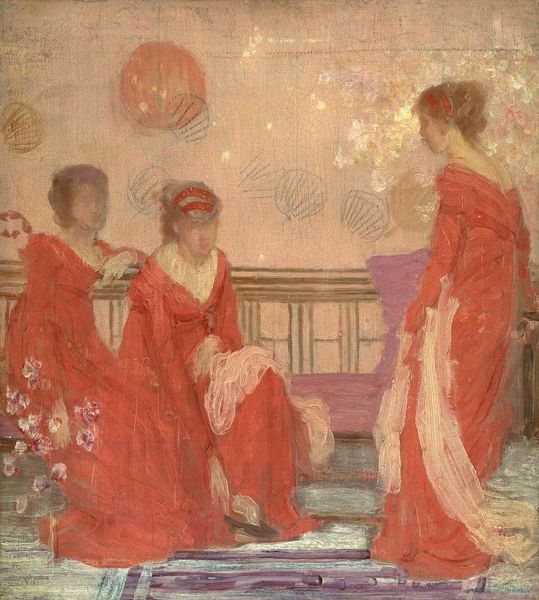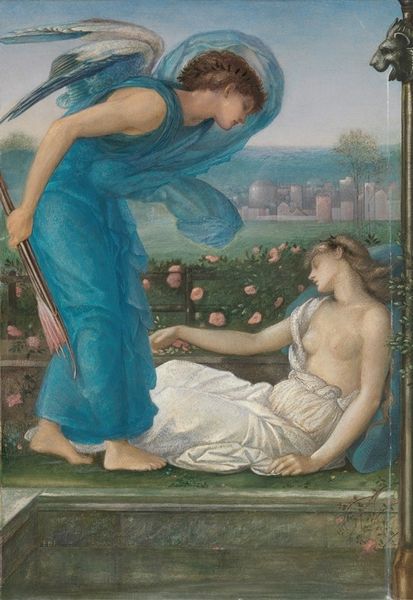
Dimensions: support: 1391 x 1854 mm
Copyright: CC-BY-NC-ND 4.0 DEED, Photo: Tate
Editor: Here we have Whistler’s *Three Figures: Pink and Grey*, whose dimensions are pretty large, painted with oil on canvas. There is a dreaminess, a sense of quiet intimacy. What social narratives might be at play here? Curator: It's interesting to consider how Whistler challenged traditional Victorian values, wouldn't you say? Note the deliberate ambiguity of the figures' identities, perhaps mirroring the evolving social roles of women at the time? Editor: That's a new perspective for me, thank you! Curator: The very act of depicting women in a non-idealized, aestheticized manner, focusing on mood rather than moral narrative, was quite radical. We might also examine the Orientalist elements and how they functioned within the art world. Editor: It’s amazing how much history and social context is embedded in a single painting. Curator: Precisely! And how the painting itself becomes a document of its time.
Comments
tate 8 months ago
⋮
http://www.tate.org.uk/art/artworks/whistler-three-figures-pink-and-grey-n05971
Join the conversation
Join millions of artists and users on Artera today and experience the ultimate creative platform.
tate 8 months ago
⋮
Whistler wanted his paintings to create a mood or atmosphere rather than tell a story or suggest any kind of theme, He was influenced by Japanese art, shown here in the blossoming tree and parasol as well as the shallow composition. It has been suggested that Whistler’s colour scheme and the women’s draping clothes were influenced by ancient Greek terracotta (‘tangara’) figures. He would have seen these in the British Museum, which was opposite his London studio. Whistler wasn’t happy with this work, describing it as 'a picture in no way representative, and in its actual condition absolutely worthless'. Gallery label, January 2019
